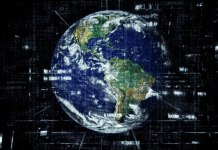
Image classification and object detection are crucial in the field of computer vision. They enable machines to recognize and interpret images. And play a significant role in various applications. From facial recognition systems to autonomous vehicles, these processes are foundational.
This article aims to explain the key differences between these two concepts. It highlights the need for accurate data labeling to train effective models. Grasping these aspects is vital for improving machine vision. This is valuable to researchers and businesses aiming to harness machine vision’s power.
Image Classification vs. Object Detection: What Is the Difference?
In computer vision, there are two fundamental tasks to stand out. They are image classification and object detection. Each plays a vital role in how machines interpret visual data. However, they cater to different needs and complexities within the field.
Image classification involves assigning a single label to an entire image. This process categorizes the image into one of several predefined classes. For instance, an image could receive a label as “cat” if it predominantly features a cat. This task focuses on the overall content of the image rather than specifics.
Object detection, on the other hand, goes a step further. It not only identifies what objects are present in an image but also locates them. This means it provides both the class of the objects and their specific position. If an image contains a cat sitting on a mat, object detection will pinpoint the cat and the mat as separate entities. Bounding boxes are often used for such tasks.
Here are key points to distinguish the two:
- Scope of Identification: Image classification assigns one label to the whole image. Object detection identifies and locates multiple objects within the same image.
- Output complexity. Classification results in a single class output. Detection provides multiple outputs, including class labels and object location.
- Application use. Classification suits applications needing a broad understanding of images. Detection fits scenarios requiring detailed insights about the presence and position of objects.
Comparison of object detection vs. image classification lies in the understanding of where each method applies. Plus, what’s its significance in developing accurate computer vision systems. Distinguishing them helps in selecting the right approach for a machine vision project, which will ensure that the model receives the appropriate type of data for its intended function.
Applications and Challenges in Image Classification and Object Detection
Image classification and object detection have become essential tools across diverse sectors. They transform tasks from healthcare diagnostics to retail operations. These technologies boost both the precision and speed with which systems work.
Here’s how they can assess in various sectors:
- Healthcare. Doctors use image classification to identify medical images, speeding up diagnoses. Object detection helps locate tumors in scans with precision.
- Automotive. These technologies power autonomous vehicles. Image classification identifies road signs, and object detection senses pedestrians and other vehicles. They both might act in synergy, ensuring safety on roads.
- Surveillance. Object detection enhances security by identifying suspicious activities or objects. Whereas image classification can categorize the scene.
- Retail. Retailers use these methods to monitor inventory and analyze customer behavior. This leads to improved shopping experiences.
Yet, applying these technologies comes with challenges:
- Variability in object appearance. Objects can look different depending on the angle, size, or lighting. This variability requires sophisticated models to ensure accuracy.
- Lighting conditions. Poor lighting can make objects hard to see. This challenges both detection and classification processes.
- Need for annotated data. Training accurate models demands vast amounts of annotated data. This is where the precision in data annotation becomes crucial.
Overcoming these challenges is key to advancing machine vision. High-quality annotated data is the cornerstone of training reliable models. Here’s why:
Model performance. The accuracy of data annotation directly influences the performance of machine vision systems. Precise annotations train models to recognize and interpret images correctly.
Scalability. Precise data allows models to handle more complex images, widening their use across industries.
The success of image classification and object detection depends on two main factors. These are overcoming inherent challenges and ensuring meticulous data annotation. As these technologies continue to evolve, their applications expand, driving innovation across sectors. The pursuit of precision in data annotation enhances current systems. It also opens doors for future advancements in computer vision.
5 Crucial Steps in Preparing Data for Computer Vision Models
Preparing data for training computer vision models is a critical step in building effective systems. This process involves several key stages. They ensure that the data is ready to help develop accurate and reliable models. Here’s a straightforward guide:
- Collection. Gather a diverse set of images for the range of scenarios your model will encounter.
- Pre-processing. Standardize images by resizing, cropping, or enhancing them to improve model training efficiency.
- Annotation. Label the images, using the appropriate tools and techniques. They differ for either classification or object detection tasks. This might include drawing bounding boxes for objects. Or labeling entire images with their corresponding class.
- Quality check. Review the annotated data to ensure accuracy and consistency across the dataset.
- Training. Use the prepared and annotated data to train your machine vision models. Adjust parameters as needed for optimal performance.
The choice of annotation method plays a critical role in the process. Simple labeling works well for classification tasks. Detection tasks may need detailed methods like bounding boxes or segmentation.
Working with data annotation experts can greatly improve machine vision projects. These specialists bring the needed skills for efficient and accurate data preparation. They help build better models. Their involvement gives you access to top-quality annotated data. It also makes the development process smoother. This lets you focus more on innovation and putting applications to use.
This streamlined approach is key to advancing computer vision technologies. It ensures models learn from reliable, well-annotated datasets. And supports creating accurate and effective machine vision solutions.
Key Takeaways

The abovementioned steps are fundamental for those aiming to enhance computer vision technologies. Exploring resources or seeking expert guidance can pave the way for innovation and success.










